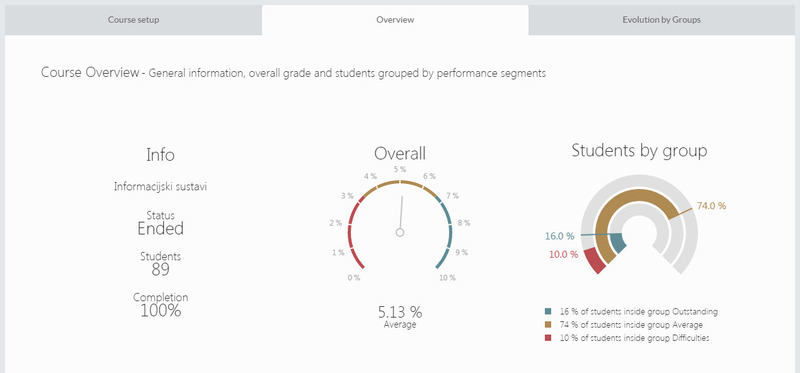Assessment for Learning MOOC’s Updates
Moodle : a learning and assessment environment that offers learning analytics
Moodle is a learning platform or learning management system (LMS) used to create learning environments for blended learning, online learning or flipped classroom teaching methods.
It offers a series of learning analytics tools that can be used to assess students’ performances, such as GISMO, MOCLog, Learning Analytics Enhanced Rubric (LAe-R), SmartKlass™, Engagement Analytics, Excel Pivot Tables, Analytics and Recommendations, and many others.
GISMO is a visualisation tool that uses log data to produce a graphical representation of students’ interactions. It allows teachers to analyse the learning activities (attendance to courses, reading of materials, submission of assignments, etc.) of the students in all the courses proposed on the platform. The tool allows teachers to have an overview of the performance of an entire class, and not on a single student or a particular resource.
MOCLog analyses the interactions (log data) of a specific online course. All the system users can have access to reports on interactions with learning objects (for example assignments otr quizzes). The analysis is made from a didactical point of view, based on learning process and outcomes.
Learning Analytics Enhanced Rubric (LAe-R) is a plugin for Moodle based on the assessment rubrics technique (Yassine et al, 2016). The plugins contains various criterias and grading levels that are then linked to data extracted from the analysis of students’ interaction in the learning environment. Teacher can customise and change several types of criteria that are then analysed by the plugin. For example, if the one wants to measure collaboration, the tool analyses data coming from chat messages or forum posts.
SmartKlass™ is a learning analytics tool through which different stakeholders (institutions, teachers, students) can have access to specific data. Institutions can see the courses overall and the results. Teachers can monitor students’ progress through individual or collaborative work, they can see their results and provide feedback accordingly. Students can “ can view their course overall, know their performance compared to the rest of the group and to the initially expected pace set by the teacher, and improve” (Yassine et al, 2016, pp. 263).
Engagement Analytics is a tool that can be used to gather feedback on a student’s level of engagement with a certain activity. Teachers can also see snapshots of students that are at “risk” of disengagement, so that they can act accordingly.
Excel Pivot Tables can be used to export learning statistics (data from the log file) to an Excel spreadsheet file in which the user can create pivot tables and organize in groups a great volume of data (Dimopoulos et al, 2013).
Analytics and Recommendations is a tool that allows for the visualization of students' involvement in their activities. It can also recommend activities to students in order for them to improve their final grade. The tool uses colour coded charts and tables, making it easy for student to see their participations.
Sources:
https://moodle.org/
https://research.moodle.org
Dimopoulos, I., Petropoulou, O., Boloudakis, M., & Retalis, S. (2013). Using Learning Analytics in Moodle for assessing students’ performance.
Yassine, S., Kadry, S., & Sicilia, M. A. (2016, April). A framework for learning analytics in moodle for assessing course outcomes. In 2016 IEEE Global Engineering Education Conference (EDUCON) (pp. 261-266). IEEE.



